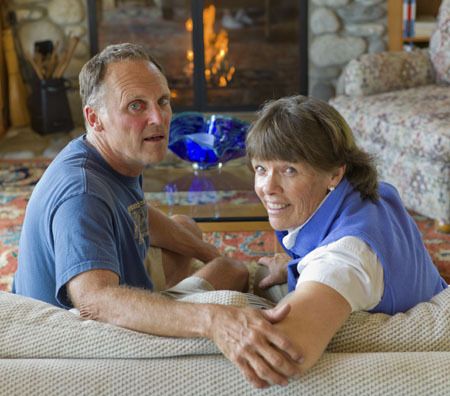It started out as guy talk — Gary Christophersen and his friend Greg Martin jawboning about the homes they were both building on the Island.
Martin was a little ahead in the process. He had already settled on a geothermal heating system and had hired Thermal Systems, a Silverdale company, to install it. There are about a dozen or so such systems on Vashon.
“I’d heard of geothermal,” said Christophersen, a retired business owner. “But until I talked with Greg I didn’t really sense how real they were.”
Christophersen began looking into geothermal. and the more he learned, the more he warmed to the idea.
Gary and his wife Grace have lived on Vashon since 1974. They started out on a five-acre farm in Lisabuela and moved to Quartermaster Drive in the early 1990s. Several years ago, the couple decided to buy the property next door and design a new home. It’s a lovely, well-insulated wood frame house with vaulted ceilings, large double-glazed windows and that geothermal system. They moved into the new house in 2008.
Their first Quartermaster house had a 1950s-era radiant heat system driven by a natural gas boiler. They both wanted radiant heat for the new house, but they were looking for a cheaper, more eco-friendly way to power it.
“I wanted to cut our costs,” said Grace. “To me, that was a very important factor.”
Geothermal systems are not
cheap to install. The Chris-tophersens spent about $10,000. But over time the nearly maintenance-free systems are much less costly to run.
Geothermal technology relies on the fact that six feet below ground the temperature remains a constant 56 degrees. Using a heat exchanger, a compressor and thousands of feet of plastic tubing, geothermal systems harvest that heat.
To install the Christophersens’ system, workers from Thermal Systems excavated a six-foot-deep, seven-foot-wide trench that meandered back and forth beneath the gravel parking area behind their new house and then up the driveway. They laid 6,000 feet of one-inch plastic pipe inside the trench — 3,000 feet going out, 3,000 feet coming back — and connected both ends to a heat exchange unit that occupies a small room just off the entryway.
To avoid the Christophersens’ septic field and an adjacent wildlife corridor, the trench system had to fit within a fairly narrow space between the house and the garage. “We had to spend some time laying it out,” said Gary. In the end, “wherever the cars go is where we put it.”
Putting in the Christophersens’ system took about a week, and it was pretty messy. “It’s a huge trench with lots of dirt that had to be piled sideways,” said Gary.
Once the tubing was embedded and connected, it was filled with a mixture of water and alcohol, which assumed the 56-degree temperature of its surroundings. A small electric pump circulates the warm liquid through the closed system. The heat exchanger extracts 17 degrees and sends the cooler liquid back out through the underground tubing, where it warms again, and the cycle is repeated.
The harvested warmth heats a 60-gallon tank that supplies hot water for the radiant system in the floors. It also preheats the water in the hot water tank.
“We have a gas hot water heater,” said Gary. “But instead of starting with 50-degree water, it’s starting with 115-degree water, so it just takes a little bit of gas. The hot water is almost a freebie.”
The first year they lived in the new house, Gary did a comparison of their heating bill and found it was about 60 percent lower than it had been in their old home. “This house is smaller, and more energy efficient, so the savings is less than that,” he cautioned. “But I do believe the (energy) savings has got to be 40, or maybe 50 percent. We’re saving at least $1,000 a year.”
At that rate, they’ll pay off their initial $10,000 investment in eight to 10 years.
The Christophersens have one small nitpick about their new geothermal system: the noise. In winter, the compressor unit kicks on three or fours times a day, and the rough hum is loud.
Gary’s geothermal guru Greg Martin placed his machinery outdoors. The Christophersens just didn’t have the space for an outdoor siting. “It’s the one thing we would do differently,” said Gary. “And it’s the one thing we couldn’t really make work in our layout.”
Noise aside, the Christophersens love the clean efficiency of their new heating system. Gary’s advice for anyone considering geothermal? “Get the system. Just make sure you’re not putting the compressor where the noise would bother you.”
— Mary Bruno is an Island writer and a board member for WISEnergy, a Vashon nonprofit working to improve the Island’s energy picture.


